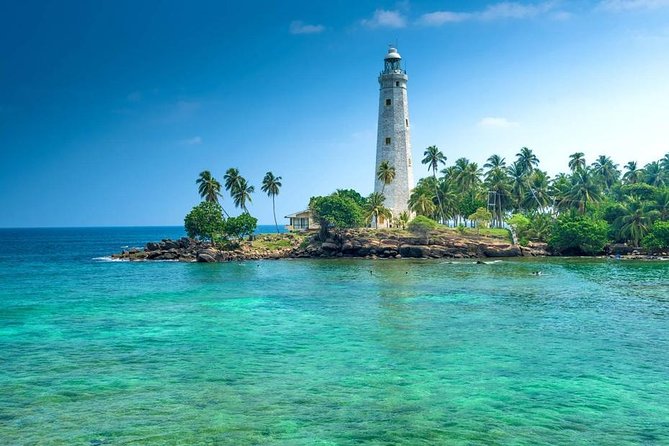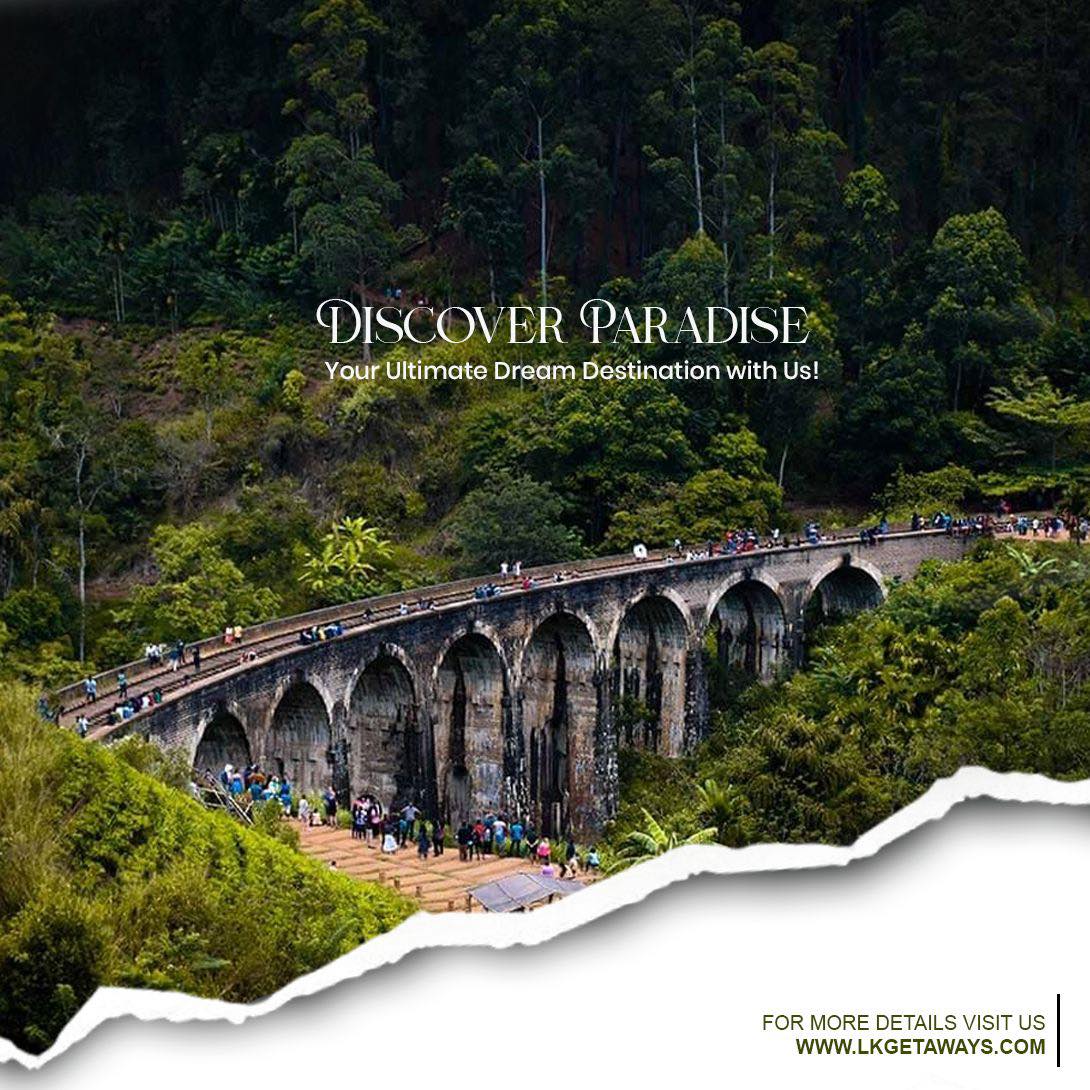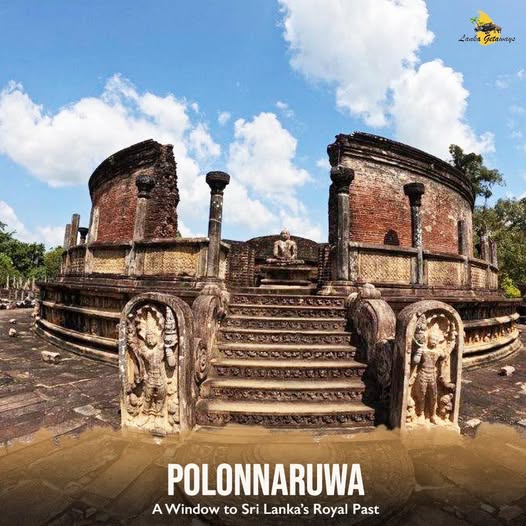Polonnaruwa is one of Sri Lanka's most historically significant cities, with a fascinating mix of ancient ruins, temples, palaces, and an impressive archaeological heritage that dates back over a thousand years. Once the capital of Sri Lanka during the Chola Dynasty and later the Sinhalese kings of the Polonnaruwa period, this city offers a window into the glorious past of Sri Lankan civilization. Today, it stands as a UNESCO World Heritage site, attracting travelers and history enthusiasts from around the globe.
This blog takes you on a comprehensive journey through Polonnaruwa, exploring its rich cultural history, notable landmarks, ancient architecture, and other fascinating aspects of the ancient city. We will also highlight how visitors can plan a visit to Polonnaruwa, along with resources like LKGetaways.com for an enhanced travel experience.
History and Significance of Polonnaruwa
Polonnaruwa’s history stretches back to the 11th century AD when it was established as the capital of Sri Lanka under the Chola Dynasty, after their invasion of the island. However, Polonnaruwa’s true prominence came later during the reign of King Parakramabahu I (1153–1186 AD), whose leadership helped transform the city into a thriving economic and cultural center. Under his rule, Polonnaruwa blossomed, showcasing monumental advancements in agriculture, engineering, and architecture.
The city also became a major center of Buddhism during this time, with temples, stupas, and statues built in honor of the religion. After Parakramabahu I’s reign, the city continued to serve as the capital for subsequent Sri Lankan kings until it eventually faded from prominence in the 13th century when the capital was moved to Kandy.
The City Layout
Polonnaruwa is divided into three main sections that showcase the grandness and varied purposes of the ancient city. These sections include:
-
The Royal Palace Complex
This area served as the heart of the ancient city and contained the royal residence of the kings of Sri Lanka. The ruins of the Royal Palace today still display remnants of royal architecture, including impressive stone structures, large columns, and a former bathing pond where the royalty would relax. It is believed that the palace once had seven stories, but today only a few foundations and walls remain standing. The architectural style of the palace is a mix of local and South Indian Chola influences, and its location within the city was designed to ensure the king’s protection, surrounded by defensive walls. -
The Sacred Quadrangle
The Sacred Quadrangle is a sacred site that houses several of the most important religious structures in Polonnaruwa. The most notable buildings include the Vatadage, a circular building that once housed the sacred tooth relic of the Buddha. It is a stunning example of ancient Sri Lankan architecture with intricate stone carvings and beautifully preserved columns. Nearby, you'll find the Gal Vihara, a rock temple complex containing four enormous statues of the Buddha, carved into a single granite rock. These statues include the famous reclining Buddha, a masterpiece of craftsmanship that remains one of the finest examples of ancient sculpture in Sri Lanka. -
The Outer City and Marketplaces
The outer areas of Polonnaruwa include ancient marketplaces and storage areas, which were once bustling with trade. The city thrived with economic activity, where merchants traded goods ranging from spices to precious stones. The remains of several buildings and stone structures offer insights into the bustling commercial life of the city during its peak.
Notable Landmarks to Visit
Polonnaruwa is home to several remarkable landmarks, each showcasing the city’s grandeur during its prime. Some of the most notable sites include:
1. The Gal Vihara
As mentioned earlier, the Gal Vihara rock temple is one of the most iconic landmarks in Polonnaruwa. The temple features four statues of the Buddha, each carved into the rock face, including the famous reclining Buddha, which is around 14 feet long. The skillful carving and the serene expressions of the statues are mesmerizing. The Gal Vihara is a remarkable example of the ancient art of rock carving and is one of the best-preserved religious sites in Sri Lanka.
2. The Vatadage
The Vatadage is another architectural marvel located in the Sacred Quadrangle. This circular structure is thought to have housed the relic of the Buddha's tooth and is one of the finest examples of ancient Sri Lankan architecture. The Vatadage's intricate stone carvings, beautifully designed staircases, and symmetrical design have made it a favorite of history enthusiasts and travelers.
3. Rankoth Vehera
Rankoth Vehera is one of the largest stupas in Polonnaruwa and stands as a symbol of the city’s Buddhist heritage. This ancient stupa, with its grand size and architectural elegance, is a popular pilgrimage site for Buddhists. Its impressive size and the surrounding stone walls provide a sense of tranquility and reverence, making it a must-visit for those exploring Polonnaruwa’s sacred landmarks.
4. Lankatilaka Temple
The Lankatilaka Temple is an ancient Buddhist temple that features an impressive stone structure and beautifully detailed stone carvings. The temple was built in the 14th century and has elements of both Sinhalese and South Indian architectural styles. The grand statue of Buddha inside the temple and its intricate carvings make it a remarkable place to visit, showcasing the blend of religious and artistic heritage in Polonnaruwa.
5. Parakrama Samudra
Parakrama Samudra is a massive reservoir built by King Parakramabahu I. This ancient irrigation system, spanning over 12,000 acres, was created to store water for agriculture. The reservoir continues to serve as a testament to the ingenuity and foresight of ancient Sri Lankan engineers. The reservoir is surrounded by lush greenery, providing a peaceful and scenic environment for visitors to enjoy. Today, it remains an important part of Sri Lanka's heritage and offers a picturesque setting for tourists to explore.
The Culture and Traditions of Polonnaruwa
Polonnaruwa is rich not only in history but also in culture. The city is home to several vibrant traditions, festivals, and cultural practices that have been passed down through the centuries. The influence of Buddhism is particularly strong, as evidenced by the numerous stupas, temples, and statues dedicated to the Buddha. Visitors can witness traditional ceremonies and observe local artisans creating exquisite crafts that showcase the cultural richness of Polonnaruwa.
The Polonnaruwa period also gave rise to a distinctive style of art and architecture that continues to influence the country's aesthetic today. The intricate carvings and sculptures seen throughout the city are fine examples of the traditional Sinhalese style, with motifs that reflect both local and South Indian influences.
Exploring the Surrounding Areas
While Polonnaruwa itself is a treasure trove of history and heritage, the surrounding areas also offer opportunities for further exploration. Some notable sites near Polonnaruwa include:
1. Wasgamuwa National Park
Wasgamuwa National Park is located about 30 kilometers from Polonnaruwa. It is home to a wide variety of wildlife, including elephants, leopards, and numerous species of birds. The park offers safaris for visitors looking to experience the natural beauty of Sri Lanka’s wildlife.
2. Habarana
Habarana is a small town located nearby that serves as a gateway to several important tourist destinations in the region, including Sigiriya and Dambulla. Habarana itself is known for its lush forests and beautiful lakes, making it an excellent destination for nature lovers and those looking to enjoy outdoor activities.
3. Sigiriya
Known as the "Lion's Rock," Sigiriya is a UNESCO World Heritage site and one of Sri Lanka’s most iconic landmarks. It is located just a short distance from Polonnaruwa and features a massive rock fortress built by King Kasyapa in the 5th century. Visitors can climb the rock and explore the ancient ruins, as well as enjoy stunning panoramic views of the surrounding countryside.
Tips for Visiting Polonnaruwa
For those planning to visit Polonnaruwa, here are a few helpful tips to make the most of your trip:
- Best Time to Visit: The best time to visit Polonnaruwa is during the dry season, from May to September, when the weather is ideal for exploring the archaeological sites.
- Dress Modestly: Polonnaruwa is a religious site, and visitors are expected to dress modestly when visiting temples and sacred locations. It is recommended to wear long sleeves, pants, and avoid wearing hats inside temples.
- Hire a Guide: While it’s possible to explore the ruins on your own, hiring a local guide can greatly enhance your experience. Guides provide detailed explanations of the historical significance of each site, adding depth to your visit.
How to Reach Polonnaruwa
Polonnaruwa is easily accessible from major cities like Colombo, Kandy, and Sigiriya. If you’re traveling from Colombo, you can take a bus or train to Polonnaruwa, which takes around 5-6 hours. Alternatively, renting a car or hiring a taxi can offer more flexibility in terms of timing and comfort. Once you arrive in Polonnaruwa, tuk-tuks and bicycles are available for rent to explore the city’s landmarks.
For those looking for a complete, stress-free travel experience, websites like lkgetaways.com offer customized travel packages that can include transport, accommodation, and guided tours to Polonnaruwa and other destinations around Sri Lanka.
Conclusion
Polonnaruwa stands as a testament to Sri Lanka’s rich cultural and historical legacy. The city’s ancient ruins, temples, and palaces offer a glimpse into the grandeur of a bygone era. Whether you are a history enthusiast, a cultural explorer, or a nature lover, Polonnaruwa provides an unforgettable experience that captures the heart of Sri Lanka's past.
To plan your visit to Polonnaruwa, check out the services and tour packages offered by lkgetaways.com. They can help you make the most of your trip, ensuring a hassle-free and enriching journey through one of Sri Lanka’s most fascinating destinations.



